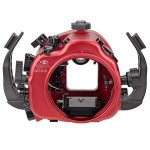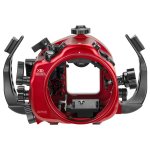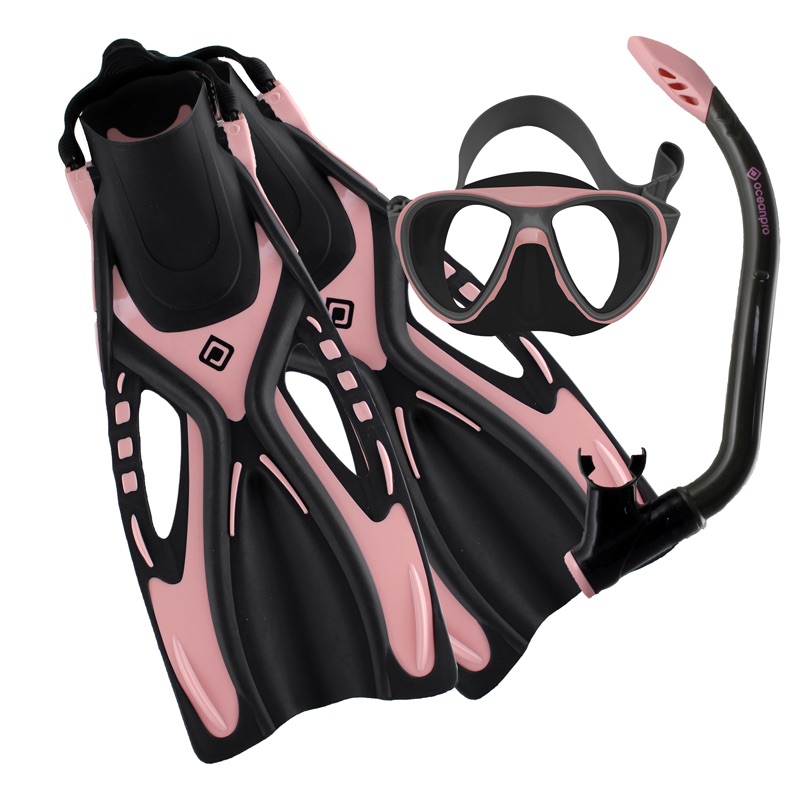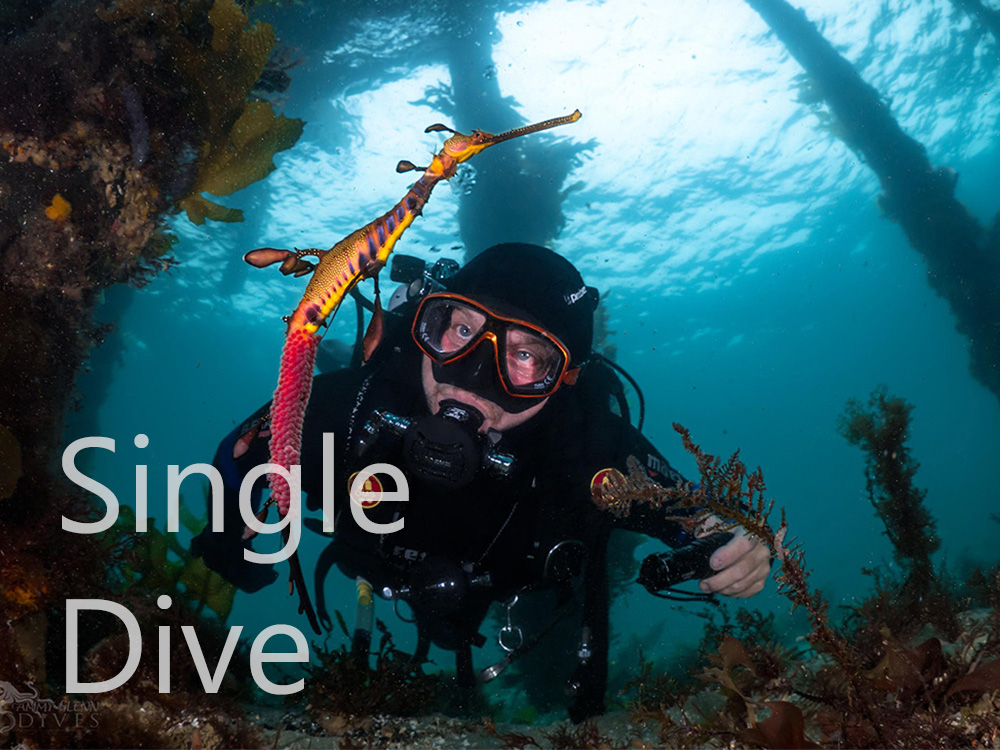Navigation
Your first purchase after getting a camera body and lens, will be an Underwater Camera Housing. Underwater housings can be made out of Polycarbonate, Aluminium (the more expensive housings), or a combination of the two. Underwater housings come in all sizes and shapes. Luckily, today you can get housings that are compact and ergonomic. Travelling with an underwater camera housing doesn't have to be a drag anymore.
The Scuba Doctor is one of the largest dive retailers and mail order suppliers in Australia of new Scuba Gear and Underwater Camera Housings. The best combination of quality services, vast selection, knowledgeable staff and competitive pricing.
Free Trader
![]() Wreck |
Wreck | ![]() Shore access
Shore access
![]()
![]()
Three-Masted Wooden Barque | Max Depth: 0 m (0 ft)
Level: Open Water and beyond.
The Free Trader (aka Freetrader) shipwreck lies on the beach in Lady Bay, Warrnambool on the Shipwreck Coast of Victoria. Twenty ships are believed to have sunk in Warrnambool's Lady Bay, but only the wrecks of three, Edinburgh Castle, Free Trader and La Bella have been discovered.
Diving and Snorkelling the Free Trader Shipwreck
Given the Free Trader shipwreck is now almost entirely buried in the sand, it's not really a dive anymore.
See WillyWeather (Lady Bay) as a guide for the tide times and the height of the tide.
{{southern-ocean-warning}}Free Trader Shipwreck History — Built in 1850
The Free Trader was originally a two-masted wooden schooner of 148 tons, built in 1850, by John Watson, in Hobart Town. The vessel had a length of 83.1 ft (25 m), a beam of 20.9 ft (6.37 m), and a depth of 11.1 ft (3.38 m). In 1856 the vessel was lengthened , had a mast added and was re-rigged as a three-masted bargue. Its new dimensions were 111 ft (34 m) in length, a breadth of 22.2 ft (6.77 m) and a depth of 11 ft (3.35 m) increasing its registered tonnage to 188 tons.
At the time of its loss the Free Trader was owned by its master captain Henry Bowden and registered in Hobart.
Free Trader Sinking — 22 July 1894
On what was to be its final voyage the Free Trader arrived in Warrnambool from New Zealand, with a cargo of timbers, with a crew of seven under the command of Captain Bowden. After the cargo of timber was discharged, the Free Trader took on some sand ballast on 19 July 1894 and awaited a favourable breeze to depart for Newcastle.
At 11 a.m. on Friday 20 July 1894, the Captain was in town on business, and a few of the seamen were away in a boat, trying to pick up the kedge which had been put down when the ship was alongside the pier. The cook and the mate were the only crew on board. At this time the ship was ranging, with a strong breeze from the west. Suddenly the anchor parted, and the Free Trader commenced to drift eastwood, but within 3 minutes they managed to get another anchor down, with 60 fathoms of chain. She drifted some little distance. The mate then called the men, and with their aid they put out the kedge anchor and 30 fathoms of chains. She held securely throughout Friday night.
On the following day even though the wind was favourable, it was decided to grapple for the missing anchor which was successful, but by this time the wind had freshened considerably from the west. In the evening it was decided to fasten a 7-inch coir rope to the recovered anchor as a further precaution. Thus with three anchors down it was thought that the Free Trader was relatively safe at her anchors, but this was not to be.
At 1 a.m. on Sunday 22 July 1894 the anchor chain which had been put out after the first one parted on Friday broke away, and placed the ship in danger. The hawser held for half an hour, but at last it parted, and the ship ship commenced to drift towards the shore. She dragged one anchor, which had 60 fathoms of chain out, and the crew tried hard to slip the shackles so as to let the vessel go straight on, but before they could get them free the ship struck and smashed into some piles which extended some distance into the sea with pipes for the baths.
The vessel struck the structure broadside on, but even though the beach was relatively protected at this spot, the Free Trader unfortunately struck directly onto the pile supporting the pipes which punctured the hull, causing the vessel to sink. Luckily for the crew all they had to do to reach safety was to scramble along the pipes, but the vessel was not so fortunate as it slowly but surely began the process of destruction as it rose and fell against the pipes as each swell past.
The damage to the piles and piping connected to the sea baths was also extensive with the Free Trader ripping out many piles and links of iron pipes.
In time, the Free Trader disappeared beneath the sands of Lady Bay, Warrnambool.
See also, Heritage Council Victoria: Free Trader.
Heritage Warning: Any shipwreck or shipwreck relic that is 75 years or older is protected by legislation. Other items of maritime heritage 75 years or older are also protected by legislation. Activities such as digging for bottles, coins or other artefacts that involve the disturbance of archaeological sites may be in breach of the legislation, and penalties may apply. The legislation requires the mandatory reporting to Heritage Victoria as soon as practicable of any archaeological site that is identified. See Maritime heritage. Anyone with information about looting or stolen artefacts should call Heritage Victoria on (03) 7022 6390, or send an email to heritage.victoria@delwp.vic.gov.au.
Traditional Owners — This dive site is in the traditional Country of the Eastern Maar people of south-western Victoria between the Shaw and Eumerella Rivers and from Yambuk in the south to beyond Lake Linlithgow in the north. This truly ancient Country extends as far north as Ararat and encompasses the coastal townships of Port Fairy in the west, Warrnambool, Peterborough, Port Campbell, Apollo Bay, Lorne, and Airies Inlet in the east, including the Great Ocean Road area. It also stretches 100 metres out to sea from low tide and therefore includes the iconic Twelve Apostles. "Eastern Maar" is a name adopted by the people who identify as Maar, Eastern Gunditjmara, Tjap Wurrung, Peek Whurrong, Kirrae Whurrung, Kuurn Kopan Noot and/or Yarro waetch (Tooram Tribe) amongst others. We wish to acknowledge the Eastern Maar as Traditional Owners. We pay respect to their Ancestors and their Elders, past, present and emerging.
Free Trader Location Map
Latitude: 38° 23.648′ S (38.394137° S / 38° 23′ 38.89″ S)
Longitude: 142° 28.916′ E (142.481936° E / 142° 28′ 54.97″ E)
Datum: WGS84 |
Google Map
| Get directions
Added: 2022-05-18 10:01:57 GMT, Last updated: 2022-05-24 05:52:33 GMT
Source: Peter Ronald GPS
Nearest Neighbour: Warrnambool Breakwater Inside, 1,049 m, bearing 209°, SSW
Three-Masted Wooden Barque.
Built: Hobart Town, 185.
Sunk: 22 July 1894.
Lady Bay, Warrnambool, Shipwreck Coast.
Depth: 0 m.
[ Top ]
DISCLAIMER: No claim is made by The Scuba Doctor as to the accuracy of the dive site coordinates listed here. Should anyone decide to use these GPS marks to locate and dive on a site, they do so entirely at their own risk. Always verify against other sources.
The marks come from numerous sources including commercial operators, independent dive clubs, reference works, and active divers. Some are known to be accurate, while others may not be. Some GPS marks may even have come from maps using the AGD66 datum, and thus may need be converted to the WGS84 datum. To distinguish between the possible accuracy of the dive site marks, we've tried to give each mark a source of GPS, Google Earth, or unknown.
Copyright © 2005-2022 by The Scuba Doctor Australia, ABN 88 116 755 170. All rights reserved.
tel. +61 3 5985 1700 :: email. diveshop@scubadoctor.com.au :: Web site by it'sTechnical 2022



















![Halcyon Infinity 30lb System [SS Small Backplate] Halcyon Infinity 30lb System [SS Small Backplate]](/diveshop/images/halcyon/Halcyon-Evolve-Wing.jpg)



















































































































